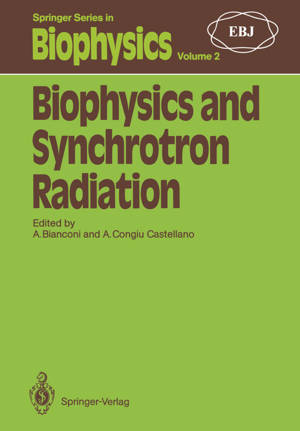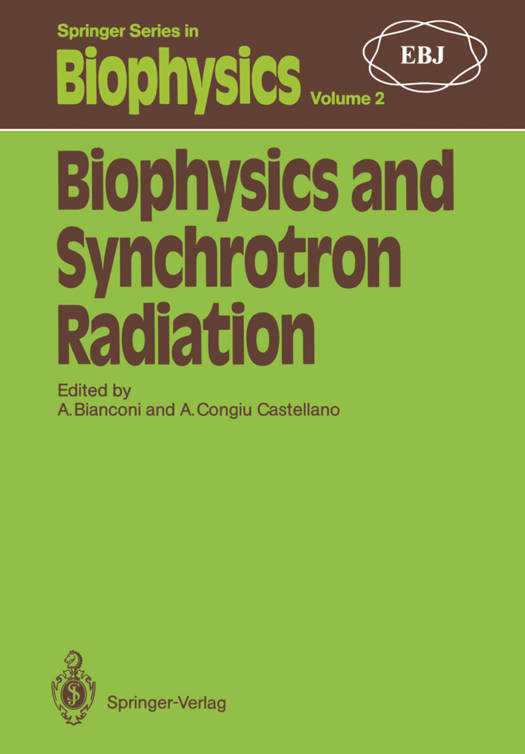
- Afhalen na 1 uur in een winkel met voorraad
- Gratis thuislevering in België vanaf € 30
- Ruim aanbod met 7 miljoen producten
- Afhalen na 1 uur in een winkel met voorraad
- Gratis thuislevering in België vanaf € 30
- Ruim aanbod met 7 miljoen producten
Zoeken
Omschrijving
This book the second volume in the "Springer Series in Biophysics" col- lects together contributions to the conference on "Biophysics and Syn- chrotron Radiation" held in July 86 at Frascati. This meeting addressed the advances on the structure of biological molecules obtained by using synchrotron radiation. In fact it was most timely to review the results of the research in biophysics which is rapidly developing at synchrotron radiation facilities. Moreover, there was interest to discuss the new perspectives opened up by the future high brilliance synchrotron radia- tion sources. With the use of synchrotron radiation, x-ray spectroscopy of biological molecules is firmly established in the techniques of EXAFS and XANES. Contributions to the detailed knowledge of local structure of active sites of metalloproteins by this approach are presented in this volume, together with a number of studies of -the interaction of metal ions with other important biological macromolecular systems. Structural determination of very large biological systems at high reso- lution, including a protein and its substrate, are reported. The experi- mental advances in protein crystallography presented here reduce the time for solving protein structures, thus satisfying a major require- ment of the rapidly-expanding field of protein engineering.
Specificaties
Betrokkenen
- Uitgeverij:
Inhoud
- Aantal bladzijden:
- 333
- Taal:
- Engels
- Reeks:
- Reeksnummer:
- nr. 2
Eigenschappen
- Productcode (EAN):
- 9783642714924
- Verschijningsdatum:
- 6/12/2011
- Uitvoering:
- Paperback
- Formaat:
- Trade paperback (VS)
- Afmetingen:
- 170 mm x 244 mm
- Gewicht:
- 562 g

Alleen bij Standaard Boekhandel
+ 300 punten op je klantenkaart van Standaard Boekhandel
Beoordelingen
We publiceren alleen reviews die voldoen aan de voorwaarden voor reviews. Bekijk onze voorwaarden voor reviews.







